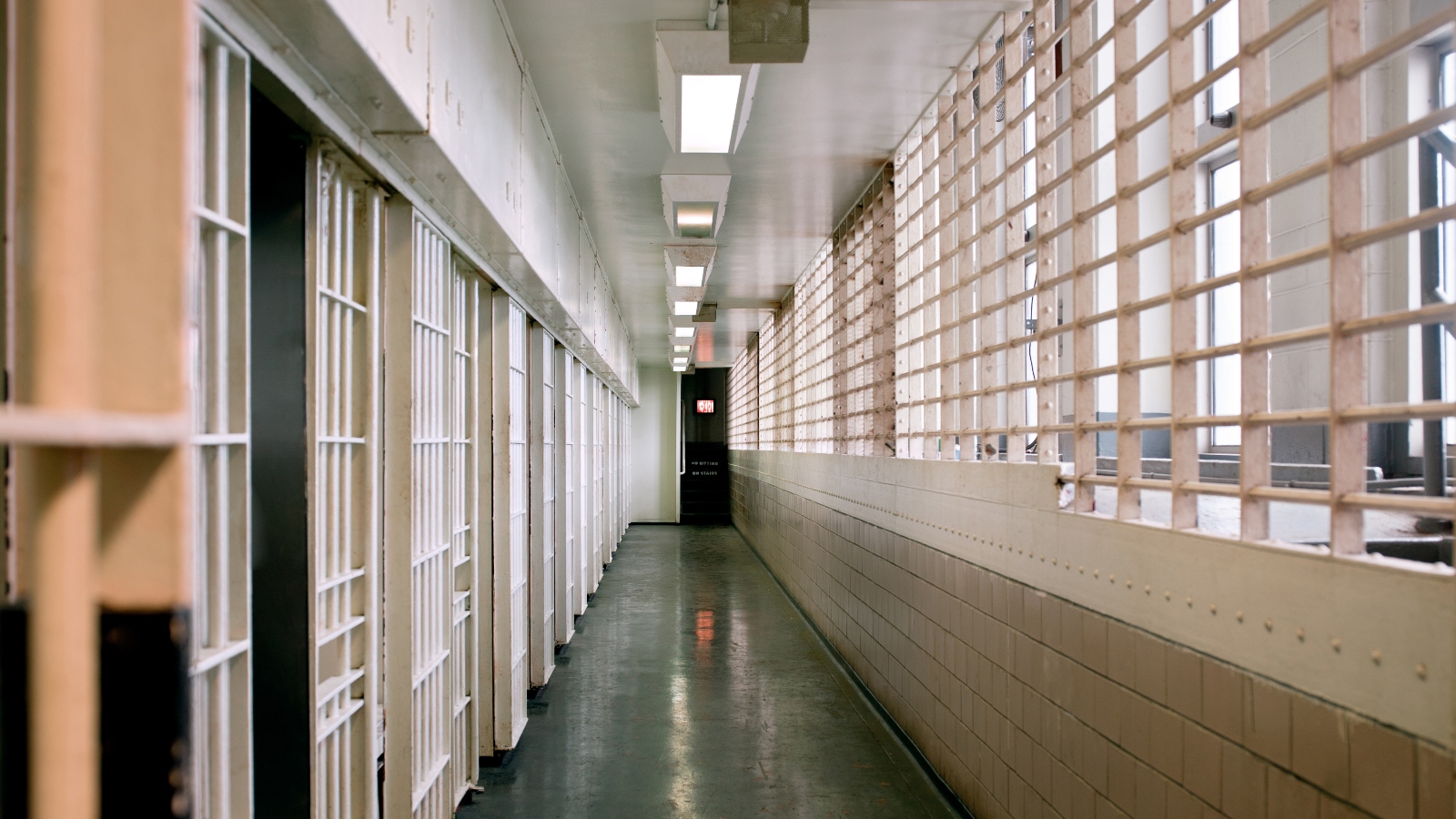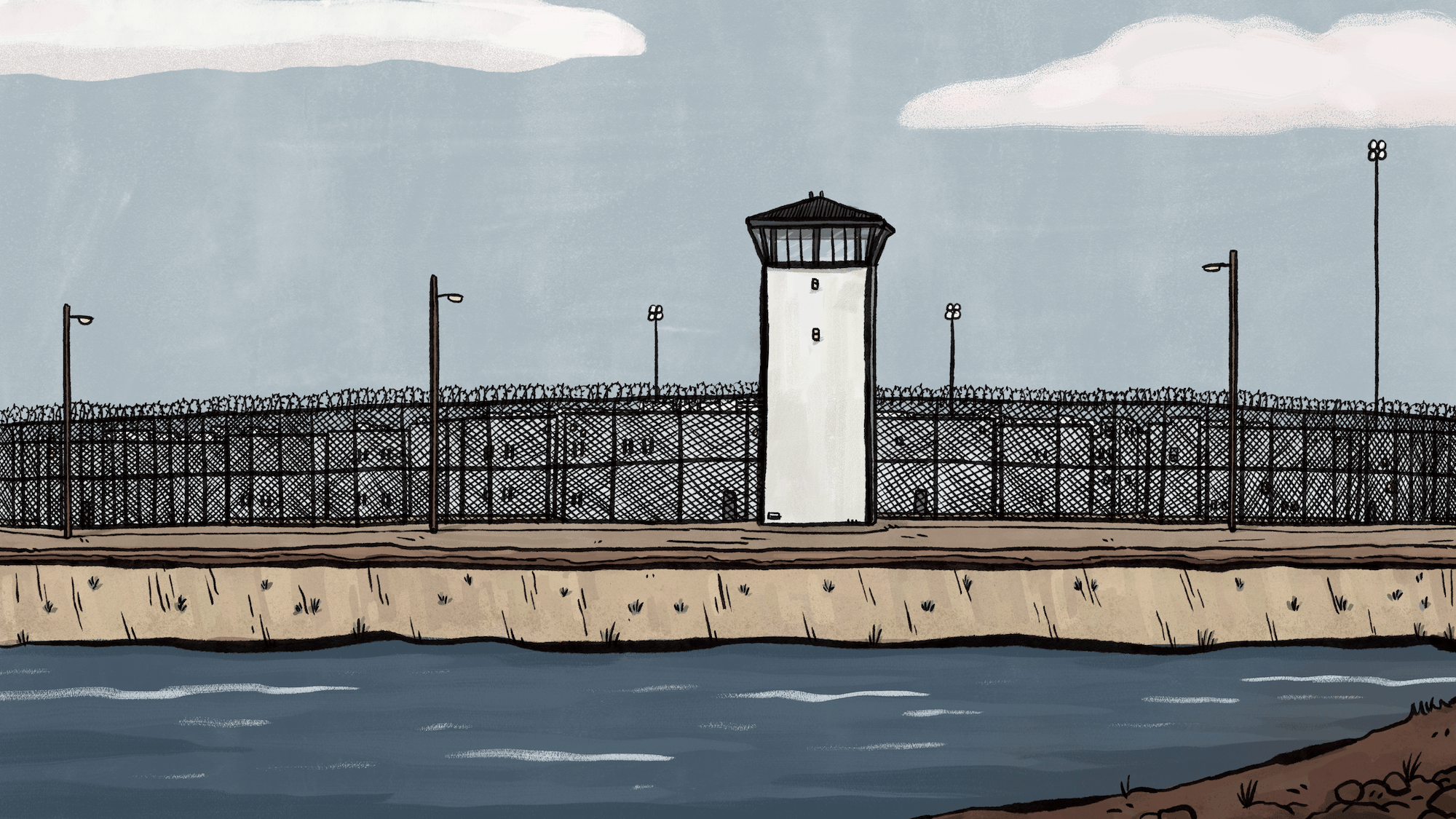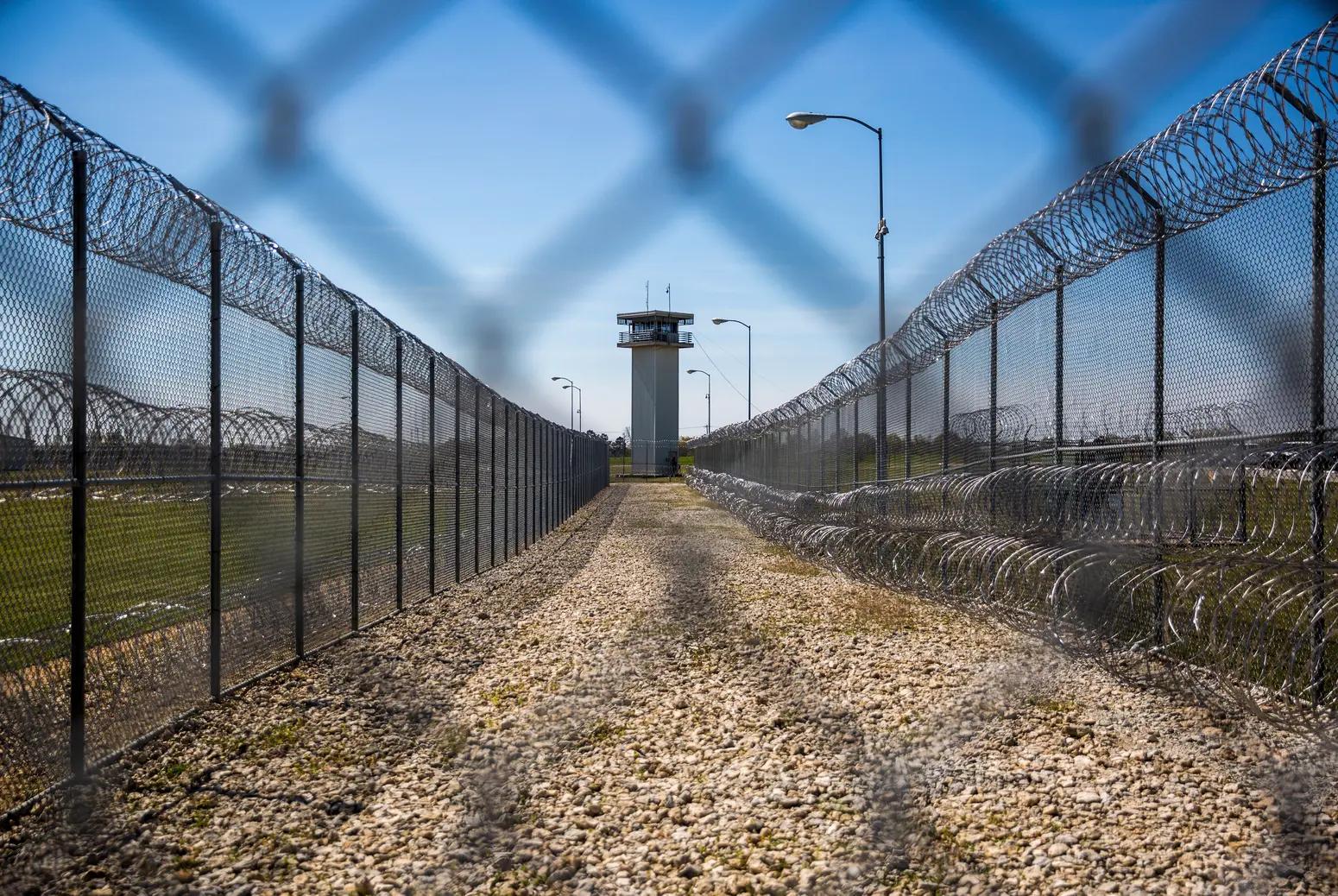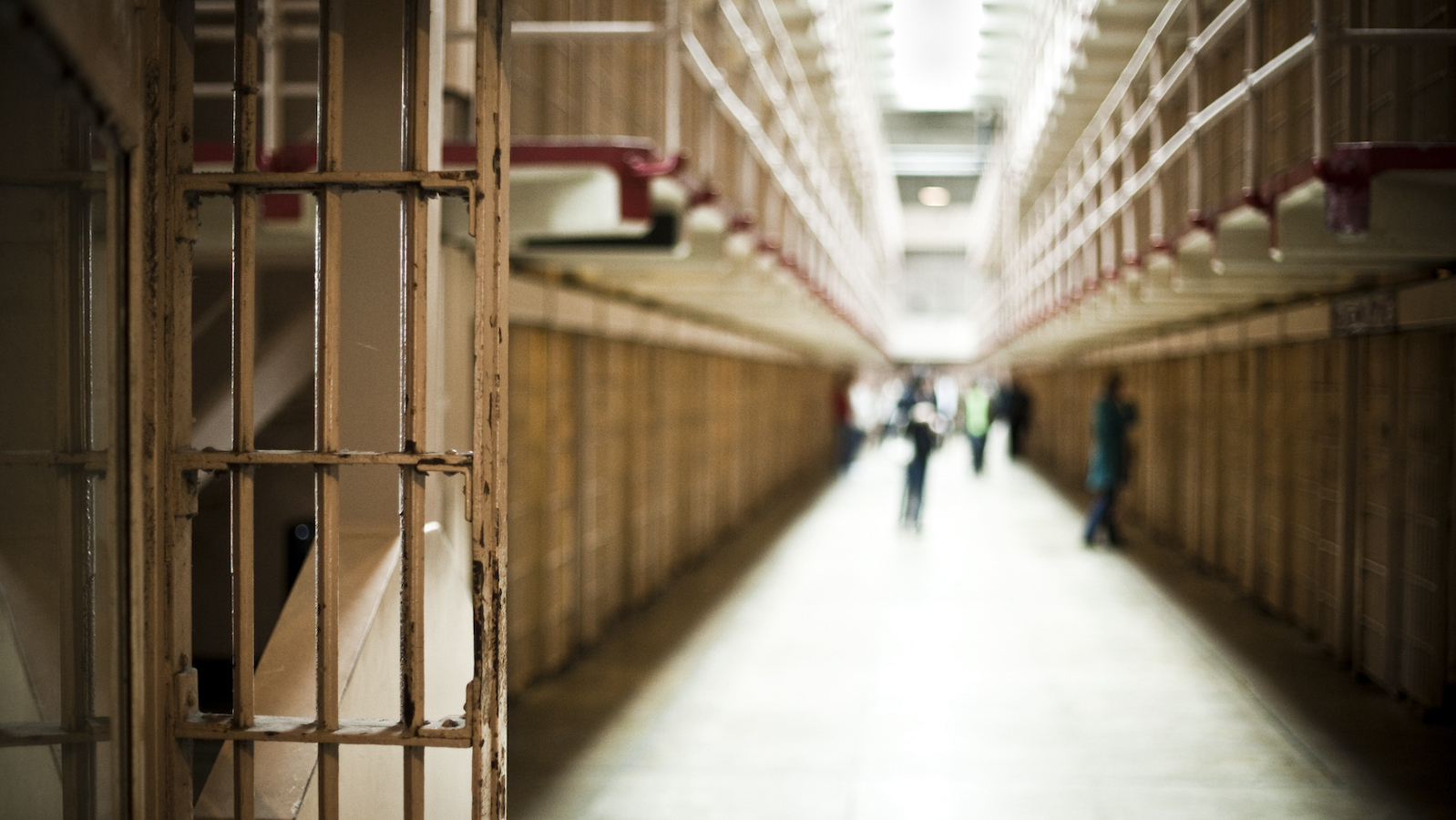
On June 19, Michael Broadway struggled to breathe inside his cell at Stateville Correctional Center, a dilapidated Illinois state prison about 40 miles southwest of Chicago.
Outside, temperatures hovered in the 90s, with a heat index — what the temperature feels like — of nearly 100. Just days earlier, a punishing heat wave had brought a string of days topping out in the mid-90s. With no air conditioning or ventilation, Broadway’s unit on the fifth floor of the prison had become a furnace.
“We live on the highest gallery in the cellhouse,” Mark, who lived next door to Broadway, told The Appeal over the prison’s messaging service. “It never cools off. Personal fans blow hot air. You have to sit still. Move and you are sweaty.”
(We are using an alias to protect Mark from retaliation.)
Mark and others on Broadway’s cellblock yelled for help, but a nurse didn’t come until more than 15 minutes later, according to a statement Broadway’s neighbor, Anthony Ehlers, provided to the law firm representing Broadway’s family.

Photo courtesy of Monika Wnuk
“It’s too hot,” the nurse said, according to Ehlers. “I’m not going up there. Tell him to come down here.”
Broadway was “holding his neck, gasping for breath,” said Ehlers. An officer radioed that Broadway couldn’t walk. By the time the nurse entered his cell, he had already lost consciousness, said Ehlers. She administered Narcan, and officers began chest compressions. Ehlers yelled out repeatedly that Broadway had asthma and did not use drugs.
The stretcher was broken, so Mark used his bed sheet to carry Broadway down five flights of stairs with the assistance of three staff members. Broadway was taken to a nearby hospital, where he was pronounced dead.
At the time of his death, Broadway was 51 years old. While incarcerated, he battled cancer, wrote a novel, and earned his undergraduate degree from Northwestern University. An IDOC spokesperson said in an email that an investigation is ongoing.
“Mike was really special and he deserved better than to die from something so easily avoidable,” Ehlers wrote to The Appeal.
As summers get hotter, conditions are becoming increasingly dangerous for the more than 1 million people locked up in state prisons, most of which do not have universal air conditioning. Even prisons in some of the hottest states, like Louisiana, Texas, and Georgia, are only partially air-conditioned, according to a survey of state corrections agencies conducted by The Appeal. For the six states that did not respond to the survey — Florida, Tennessee, Michigan, Nevada, Kansas, and West Virginia — we gathered information from news reports, including local reporting and a USA Today analysis of prison air conditioning published in 2022.
According to our investigation:
- Just over 80 percent of federal prisons have universal air conditioning.
- Only five states provide air conditioning in all prison housing units.
- In 22 states, most people are housed in air-conditioned units, which means more than 50 percent of state prisoners live in air-conditioned housing units;
- In 17 states, some prison housing units are air-conditioned across multiple facilities.
- In five states, few housing units are air-conditioned — only a single facility and/or specialized units, like infirmaries, are cooled.
- Only one state, Alaska, has no air-conditioned housing units.
Research has found that higher temperatures — and especially prolonged periods of extreme heat — are associated with higher death rates in prison. Despite the correlation between heat and mortality, the exact number of heat-related deaths remains unknown, as many prisons do not properly track or report them, prompting concern from advocates that officials are effectively hiding these fatalities behind other causes of death.
In one high-profile case in California this July, Adrienne “Twin” Boulware died after collapsing at the Central California Women’s Facility during a heat wave, according to advocates. Boulware’s family has said prison staff told them she died from heat stroke, but a spokesperson for the state corrections agency said in an email that Boulware’s cause of death “appears to be an ongoing medical condition and not heat related.” The county coroner’s office will make the final determination, the spokesperson said.
For years, incarcerated people and advocates have demanded universal air conditioning and increased access to ice, cold water, and showers to help protect against the heat. But many prison systems continue to deny prisoners even the most basic accommodations, while lawmakers have offered, at most, piecemeal investments in AC installation. Incarcerated people often rely on small, personal fans to provide some degree of comfort, but previous reporting by The Appeal has revealed that these devices can be too expensive for many to afford, especially on paltry wages — if they’re paid at all.
Without a radical departure from the status quo, the human-made crises of climate change and mass incarceration are on a collision course that will put more and more prisoners’ lives at risk. As extreme temperatures sweep across the country, the problem is expanding beyond historic hotbeds in the South and Southwest, bringing more intense and frequent heat waves to states with traditionally milder climates.
Heat waves this summer have hit much of the country, including Washington State, New York, Massachusetts, Vermont, Pennsylvania, New Jersey, Illinois, and New Hampshire, all states that lack universal air conditioning in their prisons, according to our survey. Research suggests extreme heat can be particularly dangerous for people who are not acclimated to such high temperatures.
In New York, most of the state’s approximately 30,000 prisoners are confined to housing units without air conditioning. This summer, the heat index hovered around 100 degrees for several days back-to-back in areas where some state prisons are located. In New Hampshire, only one of the state’s three prisons, the New Hampshire Correctional Facility for Women, has air conditioning. Temperatures in Concord, where the New Hampshire State Prison for Men is located, broke records in July with 12 consecutive days that reached 90 degrees.
In New Jersey, the third-fastest warming U.S. state and the fastest in the Northeast, about 65 percent of housing units are air-conditioned.
Marsha’s son is incarcerated at Bayside State Prison, where most housing units are not air-conditioned. The prison is “suffocatingly hot,” she said. (We are using an alias for Marsha to protect her son from retaliation.) Last month, temperatures around Bayside hit the 90s on nine separate days. Marsha’s son told her they receive ice twice daily, but it “melts right away,” she said.
To combat the heat, Marsha said her son bought a couple of fans from the commissary; one was sold at a discounted price. According to a state prison commissary list obtained by The Appeal last year, a 9-inch fan costs about $16.
A Department of Corrections spokesperson said in an email that people assigned to housing units without air conditioning may purchase one fan and one 28-quart cooler at a discounted price if they have not previously been provided one.
Like much of the Northeast, Vermont is heating up at a troubling pace, making it one of the fastest-warming states in the country, according to the research group Climate Central.
In June, the Vermont State Employees’ Association filed a complaint with the state on behalf of members who work at Southern State Correctional Facility. According to the complaint, an officer had developed heat stroke while he was working in the prison’s infirmary. Although this is the only unit in the facility with air conditioning, the complaint alleges it was not working properly at the time.
A spokesperson for the Vermont DOC told The Appeal in an email that Southern State is the next prison slated to receive universal air conditioning, a project that is set to be completed by 2027. Earlier this year, lawmakers approved funding for a fraction of what it will likely cost to install air conditioning in all of the state’s prisons, according to local news outlet Vermont Public.
“The State is actively working to install HVAC across all correctional facilities,” a Vermont DOC spokesperson said in an email. “Investing in the physical infrastructure of our facilities, to include installing air conditioning, is a considerable priority for the Department to ensure a dignified and comfortable experience for those who live and work in Vermont correctional facilities.”
Only two out of Vermont’s six prisons are fully air-conditioned, which amounts to 29 percent of the state’s housing units, according to the DOC. The DOC spokesperson said that depending on the facility, staff may distribute free ice twice a day, place fans in common areas, use water misters, distribute popsicles, or set up water and shade stations in the yard. Prisoners can purchase a 6-inch desk fan for about $13 and an 8-inch fan for $42, almost twice as much as it costs at a local Lowe’s.
Prisoners’ rights advocate Timothy Burgess said he’s received reports from inside Southern State about the excessive heat.
“People are cooking,” said Burgess, who is executive director of the Vermont chapter of Citizens United for the Rehabilitation of Errants, an advocacy group known as CURE. “This summer, like last summer, is absolutely brutal.”
Prisoners are often denied the most basic protections from the heat when they’re taken outside, like shade, water misters, and cold water. The stakes are particularly high for prisoners in the South and Southwest, where climate change is threatening to make notoriously blistering summers even more dangerous.
Richard, who’s incarcerated in Arizona’s Lewis Complex, said there’s little shade in the recreation yard, and jugs of provided ice water are finished quickly. (We are only using Richard’s first name to protect him from retaliation.) According to the state Department of Corrections’ HVAC Conversion Plan, air conditioning has been installed in five of the prison’s units, but installation in the remaining three is on hold pending funding. Richard says many prisoners rely on small, personal fans, which they can purchase from the commissary for about $23.
Temperatures around Lewis have reached at least 100 degrees every day since the end of May. The unrelenting heat takes a toll on people’s physical and mental health, said Richard.
“We’ve had several people fall out, pass out in the chow hall, which has no fans or ventilation of any sort,” he said. “I personally have seen probably about five or six people pass out from heat exhaustion or heat stroke.”
Heat stroke can be deadly. Last July in Georgia, 27-year-old Juan Carlos Ramirez Bibiano died after being left outside in a cage at Telfair State Prison for approximately five hours without water, ice, or shade, according to a lawsuit filed by his family. A spokesperson for the Georgia Department of Corrections said in an email that the agency does not comment on pending litigation.
On the day of Ramirez’s death, the heat index — what the temperature feels like accounting for humidity — had reached over 105 degrees. That morning, the warden warned staff about the dangerous temperatures and told them not to keep anyone on the recreation yard for extended periods, according to the complaint.
At about 3:00 pm, security staff called for medical help. When the nurses arrived, Ramirez was lying naked on the concrete and had vomited and defecated. He was taken to the hospital, where he was found to have a body temperature of 107 degrees. DOC reported that Ramirez died of “natural causes,” according to the family’s legal team.
In Louisiana, prisoners are engaged in a legal battle to temporarily halt work on the “Farm Line” when the heat index exceeds 88 degrees. In a July ruling, a federal judge stopped short of shutting down the program but ordered corrections officials to make changes to their heat-related policies. In response, the DOC told the court they now offer workers sunscreen, access to a pop-up tent to provide shade on breaks, and other protective measures. On Aug. 15, the judge lambasted the agency’s actions as “grossly insufficient.”
Few protections exist for incarcerated people who are often forced to toil in extreme heat. This month, the U.S. Department of Labor has proposed a rule that would require employers to implement certain protections for people working in high temperatures. An agency spokesperson said in an email that the rule does not “explicitly mention incarcerated laborers” and that “as a general rule, prisoners are not regarded as employees under federal labor and employment laws.” The spokesperson said the proposed rule would soon be available for public comment and encouraged “people with serious concerns” to “participate in the rule-making process.”
If the rule is adopted, individual states may choose to include incarcerated workers, according to the spokesperson. But there is little reason to believe they would. In California, the state’s safety board explicitly excluded prisons and jails from newly approved heat-related protections for people who work indoors, meaning both incarcerated laborers and prison staff are not covered.
With the onset of climate change, outdoor conditions are also becoming harsher for incarcerated people in other parts of the country. A woman incarcerated in a Pennsylvania prison wrote to The Appeal that during yard time, they have “to take our water bottles outside,” leaving them to drink “hot-as-piss water.”
From Stateville prison in Illinois, Ehlers said there is no shade when they go out for recreation, and they’re not provided sunscreen. He said staff give prisoners a “small water cooler full of ice water, but it’s gone pretty quickly.” During the summer, Ehlers usually opts to skip recreation.
“You’re stuck out there,” he wrote. “I’ve seen plenty of guys go down with heat stroke on the yard.”
Whether inside or outside, Ehlers said incarcerated people are given little protection against the heat.
“The earth is getting hotter, and IDOC, and corrections, in general, is not adjusting, not doing anything to make sure that prisoners are safe,” he wrote. “We don’t have the ability to take care of ourselves, if we could, we would. We have to depend on the prison staff to take care of us, and they don’t care.”





